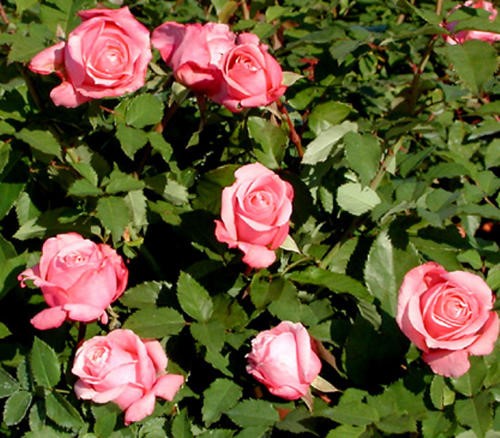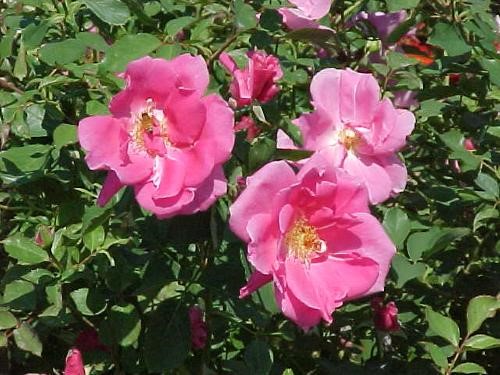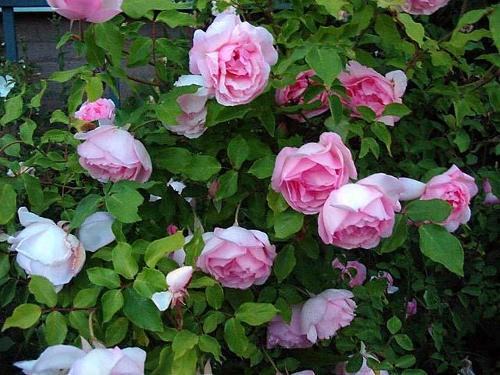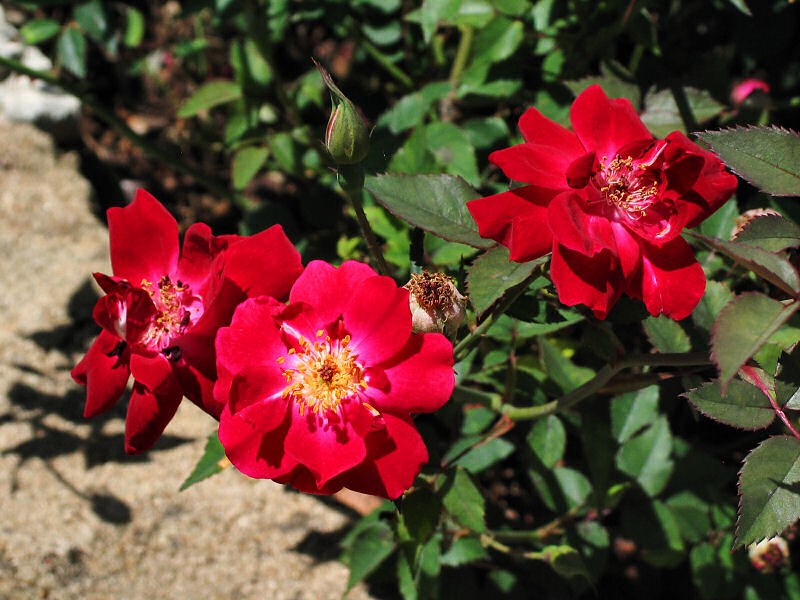Roses are a beautiful, xeric addition to any landscape, provided they have a little sun. Fall in love with these robust varieties!
Everyone has their favorite rose variety. But I chose these four because I like their color, durability and fragrance. Too many modern rose introductions are chosen solely for their looks. Call me old-fashioned, but I think roses should actually have fragrance.
Also, my selections are Earth-Kind roses. They’ve been rigorously tested in the field for durability and pest-resistance and then scrutinized by a committee of experts.
To grow quality roses in San Antonio, you must have decent soil and full sun. I’m always surprised at folks who contact the Garden Geek wondering why their roses are dying. Then, I find out they have partial to heavy shade.
Without further ado, here are my rose recommendations that tolerate poor soil, extreme drought and biblical floods.
Belinda’s Dream

A shrub rose that, at maturity, is about five feet tall and wide, Belinda’s Dream was developed in the early 90s to be grown on its own root stock rather than the traditional grafted root stock. While it has only moderate fragrance, its durability and pest-resistance are second to none. Belinda’s Dream blooms from spring until the first frost.
Carefree Beauty

Developed in the 70s, Carefree Beauty withstands cold and heat, flood and drought without batting a petal. This rose reflects its name and any extra care you provide may do it harm. Grows to approximately five feet tall and wide. Carefree Beauty blooms in successive flushes in spring, summer and fall.
Duchesse du Brabant

A mid-nineteenth century introduction, the Duchesse du Brabant has its antecedents in tea roses, but otherwise its parentage is unknown. This rose works well as a single plant. Grows to six feet tall and four feet wide. The Duchesse blooms in successive flushes in spring, summer and fall.
Martha Gonzales

This selection is not an Earth-Kind rose, but it should be. It’s very tough and pest-resistant. The previous selections have been medium-sized shrubs with dark pink flowers. Martha is shorter in stature — 2 feet by 3 feet wide — with bright scarlet flowers. The fragrance is pleasant, but not overwhelming. Martha Gonzales blooms almost continuously from spring to the first frost.
A word on establishment and care: first and foremost, soil is not as important a factor as is width of the planting hole. Wide is best, two to three times the width of the root ball. The proper term is “wide and shallow bowl.” Backfill with a loam or sandy loam soil; special mixes are not critical. Peat or sphagnum moss components are good additions. Remember not to pile soil on the root ball.
Water according to the 3-2-1 method. That’s three times a week for the first month, twice a week the second month, and once a week the last month. Here’s the best part: you only need to water twice a month during the growing season after that. These are very durable xeric plants. Fertilize with compost or organic fertilizer three times a year, preferably after each bloom.
With proper selection and care, roses are a beautiful, xeric addition to any landscape in San Antonio, provided it has a little sun.




